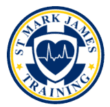Golfer’s elbow refers to a painful condition that affects the inner side of the injured elbow. The region where the tendon attaches to the bony prominence of the inner elbow region is usually affected. The pain may radiate from the elbow to the forearm and wrist.
Golfer’s elbow is caused from tendinitis, just like in tennis elbow. However, golfer’s elbow occurs on the inside of the elbow, not the outside—which is in the case of a tennis elbow injury. The injury is not limited to golfers and other sportsmen such as tennis players, other people involved in occupations that involve the repetitive motion of the wrists or sue of clenched fingers, can develop this condition as well.
How to Treat Golfer’s Elbow YouTube video
The pain caused by golfer’s elbow should not stop you from playing your favorite sports activities. It can be effectively treated with rest and conservative treatment.
Signs and symptoms
Signs and symptoms of golfer’s elbow may include:
- Pain in the inner side of the affected elbow
- Pain may radiate to the inner side of the forearm
- Tenderness of the inner elbow region
- Weakness of the wrists and hands
- Stiffness of the elbow
- Numbness and tingling that radiates to one or more fingers
Pain from golfer’s elbow may occur suddenly (acute) or gradually (chronic).
Pain worsens when you:
- Shake hands
- Swing a gold club, a bat or a racquet
- Squeeze a ball
- Turn a doorknob
- Lift weights
- Clench your fingers
- Pick something up with the palm down
- Flex the wrist
When to seek medical attention
See a doctor if conservative treatment measures and over-the-counter pain medications are ineffective in treating pain and tenderness of the elbow.
Seek prompt medical care if:
- You are not able to bend your elbow
- Your elbow is inflamed and hot and you have a fever
- You suspect a fracture
- Your elbow appears deformed
Treatment
Conservative treatment measures must be administered immediately after injury. Prompt treatment ensures speedy recovery so that you can return to normal activity in a shorter period of time.
- Rest. Avoid activities that increase or trigger pain such as golf or other activities. If you resume activity too early, you may worsen the condition.
- Ice. Apply ice packs (wrapped in a thin towel) to the affected elbow for up to 20 minutes, three to four times on a daily basis for several days. You can also ice massage the inner elbow region for five minutes each time for 3-4 times a day as well.
- Over-the-counter pain medication. Pain medication such as ibuprofen, naproxen or acetaminophen may reduce pain.
- Stretching and strengthening exercises. Your doctor or physical therapy may recommend a set of exercises to maintain the strength and flexibility of the elbow joint.
- Reduce stress to the elbow. You can wrap the elbow with an elastic bandage or apply a forearm splint for this purpose.
If the aforementioned treatment steps are ineffective in treating symptoms of golfer’s elbow, your doctor may prescribe other pain medications and treatment methods. Surgery may also be required in severe cases.
